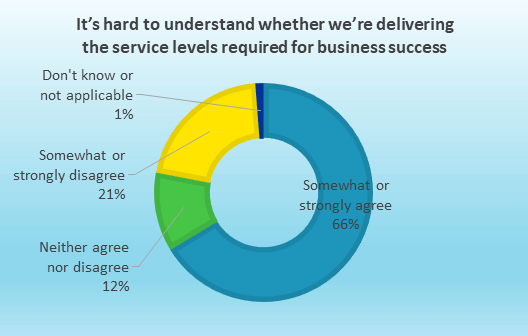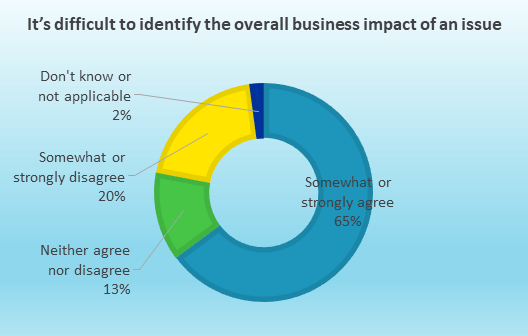When you have workloads running in a hybrid, multi-cloud environment, it’s hard to get a unified view of your entire infrastructure. In fact, Virtana’s recently published State of Hybrid Cloud and FinOps survey reveals that only 36% of respondents said they have comprehensive, unified visibility and management capabilities across all their public clouds, leaving more than two-thirds (68%) with less-than-ideal conditions for managing their multi-cloud infrastructure. Nearly one-quarter (23%) said they have comprehensive, unified visibility across all their public clouds, but it’s “view only” and management is still siloed. One-fifth (21%) stated they try to stitch together key information about their different clouds but it’s a manual process that provides an incomplete view. Another one-fifth (19%) reported that each public cloud they use operates as its own silo and they have neither a consolidated view nor tools to manage across cloud platforms.
This is a challenge facing the IT team, but the ramifications aren’t just technical—the business can suffer when there are blind spots in cloud visibility and manageability.
The hybrid cloud visibility problem is a business problem
This isn’t news to cloud teams. In fact, 71% of respondents agreed that limited visibility across their hybrid cloud environment hinders their ability to maximize value.

It’s a sweeping concern, but there are some more specific ramifications that should concern not just IT but the whole organization. For example, 70% of respondents told us that limited visibility disrupts their ability to adapt quickly. If agility is of strategic importance to the organization—and it usually is one of the key drivers for moving to the cloud in the first place—then this can be a significant issue that affects digital transformation timelines and responsiveness to market dynamics.

Two-thirds of respondents (66%) stated that they’re hard-pressed to understand whether they’re delivering the service levels their business needs to succeed. Almost the same number (65%) also reported difficulty identifying the overall business impact in the event of an issue. With technology as the foundation of most strategic business initiatives, these are troublingly high numbers.


Finally, almost two-thirds of respondents (63%) said that they are unable to make data-driven IT investment decisions. Again, with the strategic importance of digital transformation, IT investments are business investments. If you’re not using data to make those decisions, you’re relying on guesswork—and you could be handing a big advantage to your competitors that can better leverage data.

Give your cloud team—and the business—hybrid, multi-cloud visibility with Virtana
Virtana Platform delivers high-definition observability for your hybrid, multi-cloud infrastructure for unprecedented visibility to drive your digital transformation. With high-definition data and the application of AIOps technologies, including machine learning and advanced data analytics, you gain precision observability into your workloads so you can make data-driven decisions to ensure your meet SLAs and stay on budget. In short, with Virtana Platform you can plan smarter for migrations, scale smarter to increase your competitive advantage, and act smarter to simplify all your IT operations. Try it for free
Get the survey report: State of Hybrid Cloud and FinOps survey
Virtana Platform: Try it for free

Ricardo Negrete




